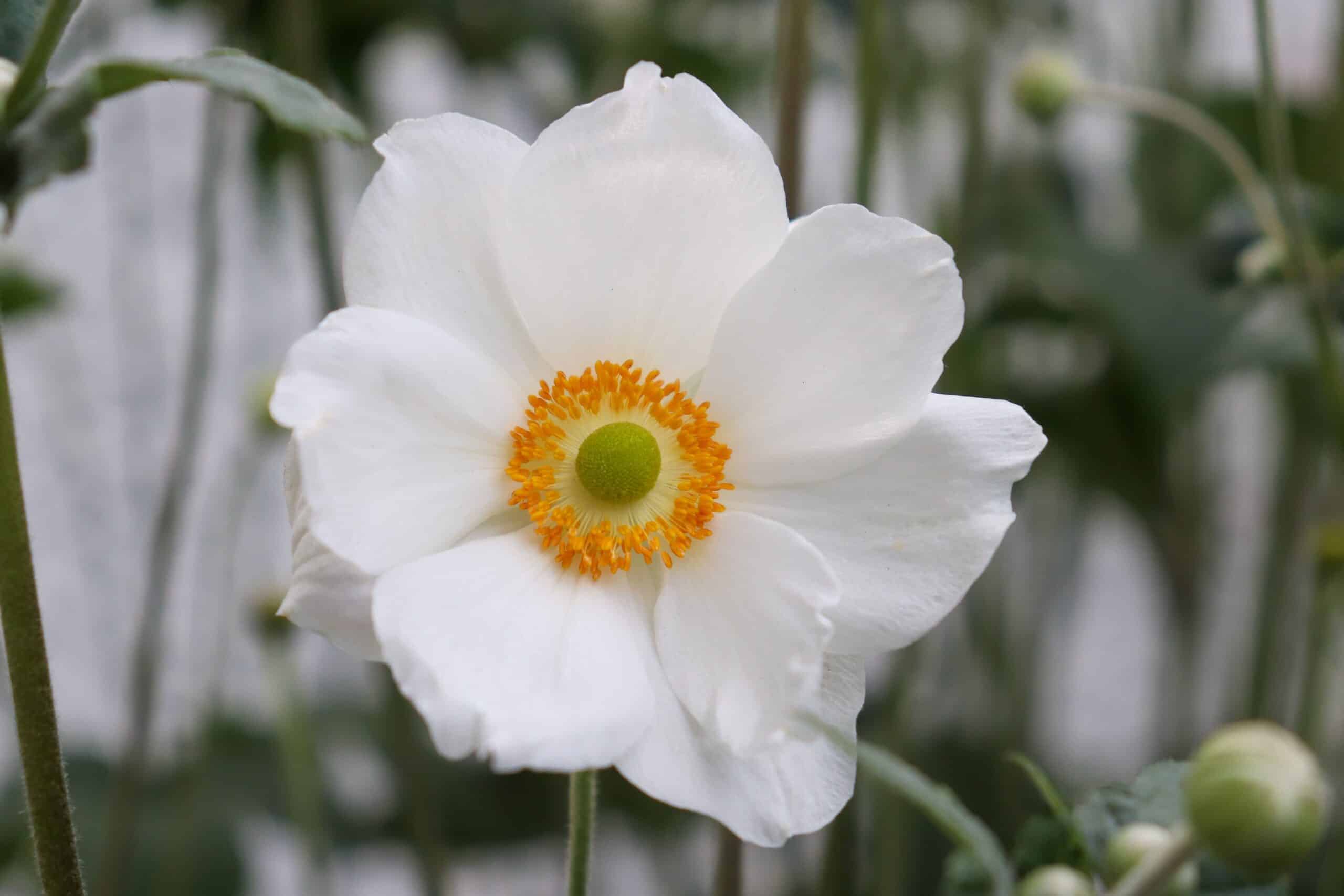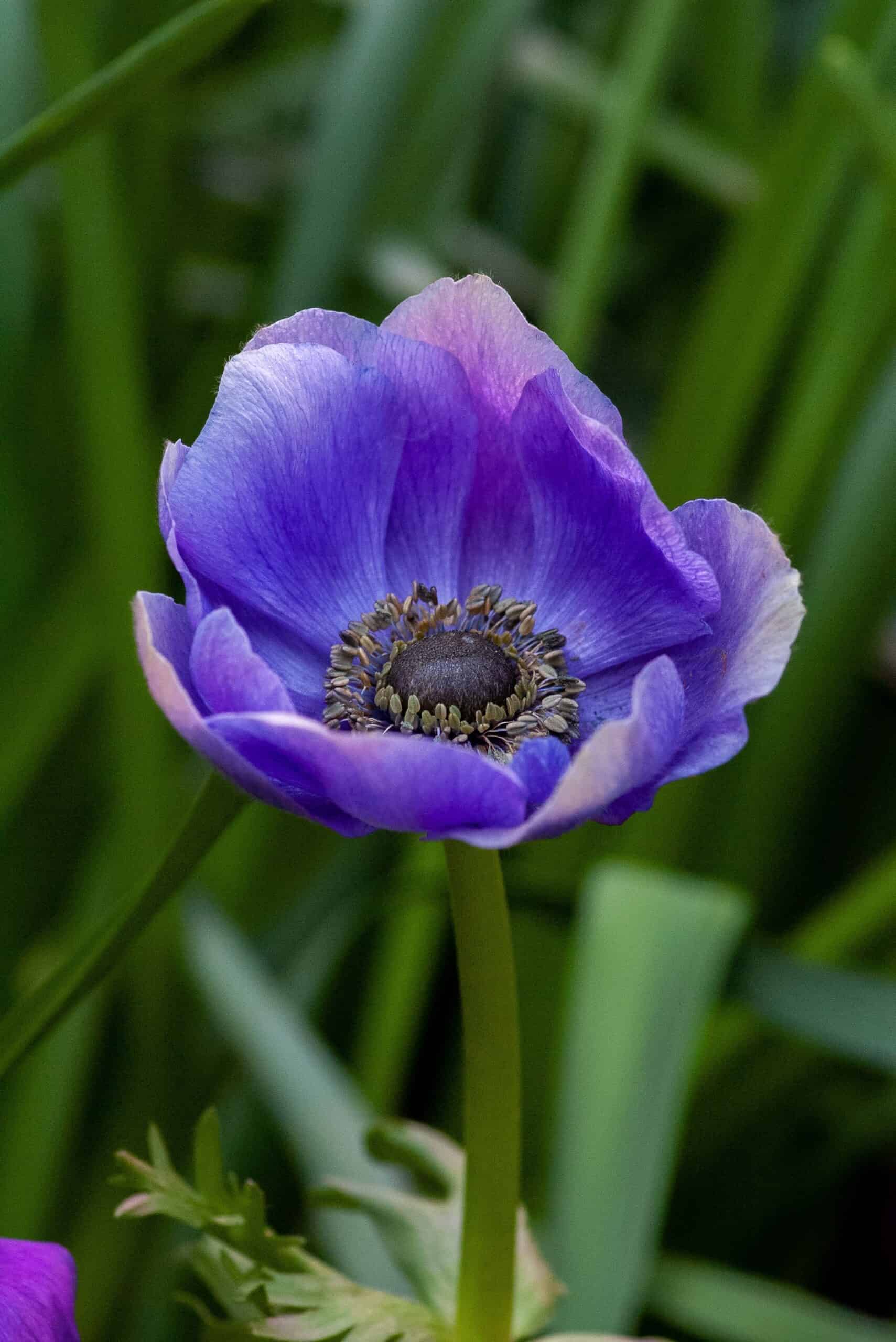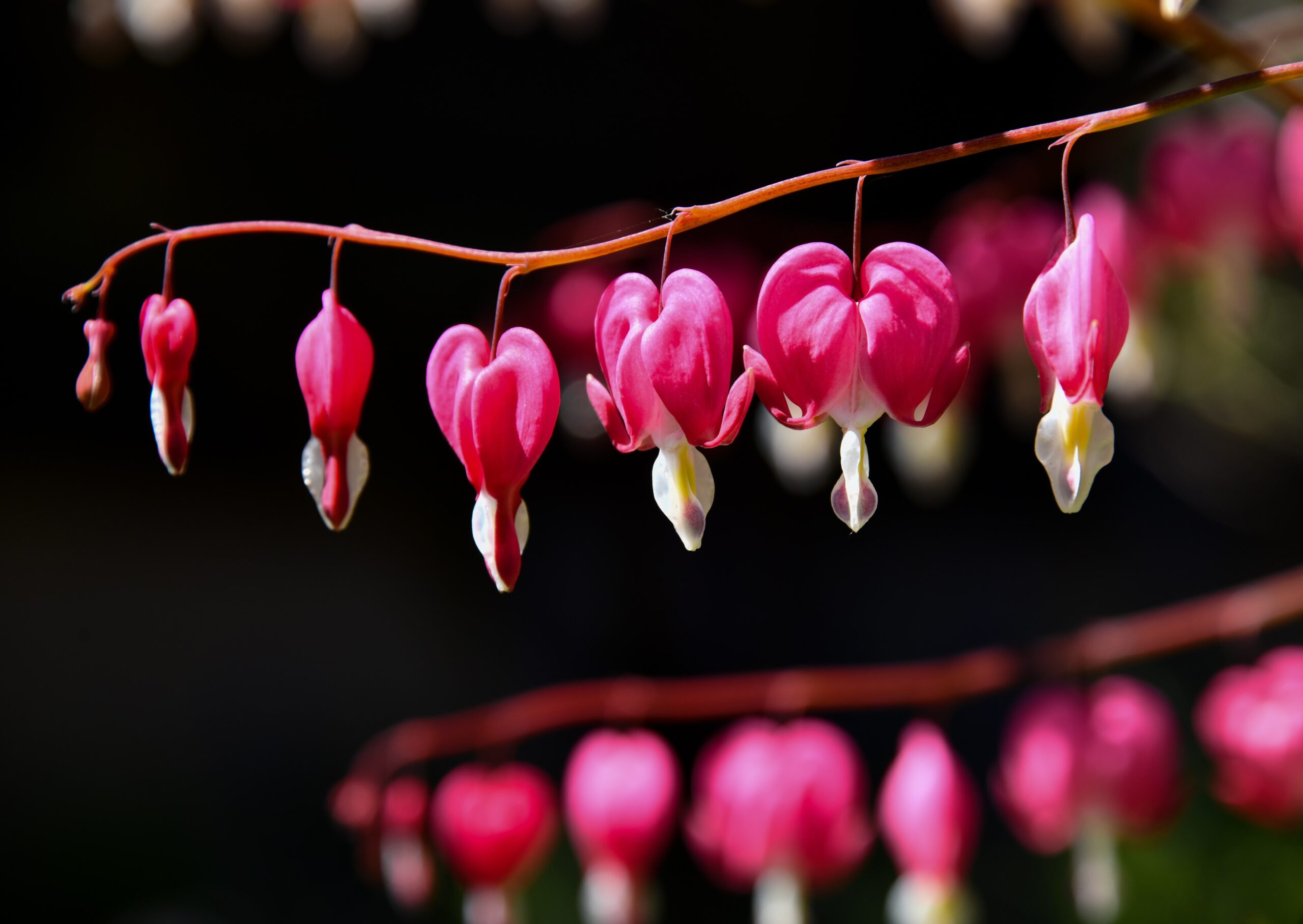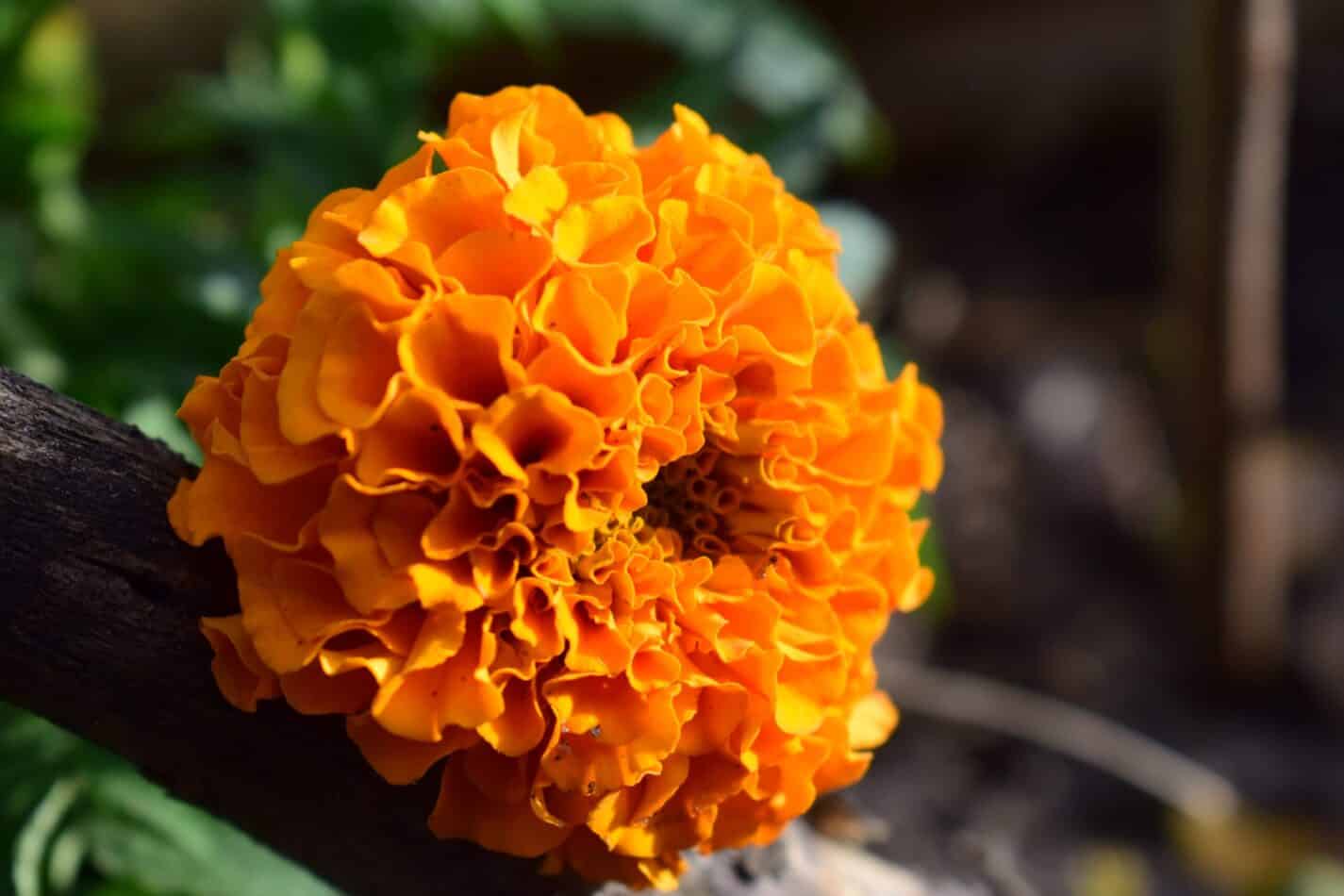Anemones are beautiful and delicate flowers that come in a variety of colors and shapes. They are also rich in symbolism and history, as they have been associated with different cultures and myths over time. In this article, we will explore the anemone’s meaning and symbolism, as well as some interesting facts and uses of these flowers.
What are Anemones?
Anemones are wildflowers that belong to the genus Anemone, part of the Ranunculaceae family. They are native to regions worldwide, including Europe, Asia, and North America. There are over 120 species of anemones, which are grouped into three types: spring flowering, tuberous Mediterranean, and larger fall flowering types. The most popular anemone species is the Japanese anemone, which blooms in autumn.
Anemones have a simple and elegant appearance, with a single layer of petals surrounding a central disc of stamens. The petals can be white, pink, red, purple, blue, or yellow, depending on the species and variety. The flowers are usually 2 to 4 inches in diameter and grow on slender stems that can reach up to 3 feet tall. The leaves are often divided into lobes or segments and have a dark green color.
The name anemone comes from the Greek word “anemos”, meaning “wind”. This is because the flowers are so light and fragile that they can be easily blown open by the wind, or have their petals plucked off by the breeze. The anemone is also known as the windflower or the poppy anemone.

Anemone Meaning and Symbolism
The anemone has different meanings and symbolism depending on its color, origin, and context. Here are some of the most common ones:
- Anticipation
The most significant anemone flower meaning is anticipation. This is because the anemone flowers close up at night and open back up in the morning. They also bloom early in the year before spring has fully arrived. They represent the idea of awaiting something or someone with excitement while also acknowledging the delicate nature of such expectations.
- Fragility
According to the Victorian language of flowers, anemones also signify fragility. They reflect the vulnerability and sensitivity of life and love, as well as the possibility of loss or disappointment. They remind us to cherish every moment and appreciate what we have.
- Death or Forsaken Love
In both Greek mythology and Christianity, the red anemone symbolizes death or the act of forsaken love. According to one legend, anemones sprang out of the tears of Aphrodite while she was mourning the death of her lover, Adonis. Adonis was killed by a wild boar sent by Ares, the god of war, who was jealous of their affair. As Aphrodite cried, Adonis’ blood stained the white anemones red. In another version, Aphrodite sprinkled nectar on Adonis’ wounds, which caused the anemones to grow from his blood. In Christianity, red anemones symbolize the blood that Christ shed on the cross for the salvation of mankind.
- Protection from Evil
The purple anemone symbolizes protection from evil. It is said that this flower was created by Zeus to protect his son Hermes from evil spirits while he was asleep. The purple color represents royalty and power, as well as mystery and magic.
- Sincerity
The white anemone symbolizes sincerity due to its pure and delicate appearance. It conveys honesty, innocence, and purity of intention. It can also represent peace and harmony.
- Relaxation
Due to its wild nature, the anemone flower also symbolizes relaxation and serenity. It encourages us to enjoy the moment and take in opportunities at the right time. It also helps us to cope with stress and anxiety.

What is the Cultural Significance of Anemones?
Anemones have been featured in various art forms and cultural expressions over time. Here are some examples:
- Anemones are often depicted in paintings by Impressionist artists such as Matisse and Monet, who had a deep appreciation for nature and flowers. Some of their famous works that include anemones are Annelies, White Tulips and Anemones, Purple Robe and Anemones, Vase of Anemones, and Water Lilies.
- Anemones are also seen in images of the Crucifixion or alongside the Virgin Mary as she mourns the death of Christ. The red anemones that are included in these paintings symbolize the blood that Christ shed for humanity’s sins.
- In Eastern cultures, such as China and Japan, anemones are considered auspicious and lucky flowers. They are believed to bring good fortune, prosperity, and protection from evil. They are also associated with longevity and immortality, as they can survive harsh conditions and regenerate from their roots.
- In some Native American tribes, such as the Ojibwe and the Potawatomi, anemones are used for medicinal purposes. They are believed to have healing properties for wounds, infections, and skin problems. They are also used to treat headaches, fever, and rheumatism.
Mythology
Anemones are delicate flowers that come in a variety of colors and shapes. They are often associated with spring and beauty, but they also have a darker side in mythology. Anemones are said to symbolize both love and death, depending on the culture and the story.
One of the most famous myths involving anemones is the Greek legend of Adonis and Aphrodite. Adonis was a handsome young man who was loved by both Aphrodite, the goddess of love, and Persephone, the goddess of the underworld. The two goddesses fought over him, until Zeus intervened and decided that Adonis would spend half of the year with each of them. However, Adonis preferred to stay with Aphrodite and often went hunting with her.
One day, while Adonis was hunting a wild boar, he was fatally wounded by the animal. Aphrodite heard his cries and rushed to his side, but it was too late. As she held him in her arms, her tears mixed with his blood and fell on the ground, where they turned into red anemones. The anemones were a sign of her grief and her love for Adonis, and also a reminder of his death.
Another myth involving anemones is the Roman legend of Venus and Adonis. Venus was the Roman equivalent of Aphrodite, and Adonis was her lover. One day, while Adonis was hunting, he was killed by a boar sent by Mars, the god of war, who was jealous of Venus’ love for him. Venus arrived too late to save him, and as she wept over his body, her tears turned into red anemones. The anemones were a symbol of her sorrow and her passion for Adonis.
Anemones also have different meanings in Christian mythology. According to some sources, anemones grew at the foot of the cross where Jesus Christ was crucified. The anemones were white, but they were stained with his blood as he died for the sins of humanity. The anemones were a sign of his sacrifice and his resurrection, and also a symbol of hope and faith.

What are Some Interesting Facts and Uses of Anemones?
Anemones are not only beautiful and symbolic flowers but also have some interesting facts and uses. Here are some of them:
- Anemones have a numerology number of 8, which represents balance, harmony, and abundance. It also signifies strength, courage, and leadership.
- As cut flowers, anemones only last 2 to 3 days in a vase. However, they are one of the most popular flowers to be used in wedding arrangements, such as bouquets, centerpieces, and corsages. They add a touch of elegance and charm to any occasion.
- Although anemones are toxic to humans and animals if ingested, some species have medicinal uses. For example, Anemone nemorosa is used to treat cramps and menstrual complications. The European wood anemone is used to treat gout, nausea, and stomach problems.
- Anemones are also edible in some cultures. For instance, the Japanese eat the leaves and stems of the anemone as a vegetable. They also use flowers to make tea or dye fabrics.
- Anemones are not only found on land but also underwater. There are marine animals called sea anemones that belong to a different phylum than the flower. They are related to corals and jellyfish and have tentacles that can sting their prey or predators.
Anemones are fascinating flowers that have a lot of meaning and symbolism behind them. They can express different emotions and messages depending on their color and context. They can also inspire us to live with anticipation, fragility, sincerity, relaxation, and protection. Whether you want to give them as a gift or grow them in your garden, anemones are sure to brighten up your day with their beauty and charm.
What we love from Amazon this week
Buy these wonderful flowers directly from Amazon:















